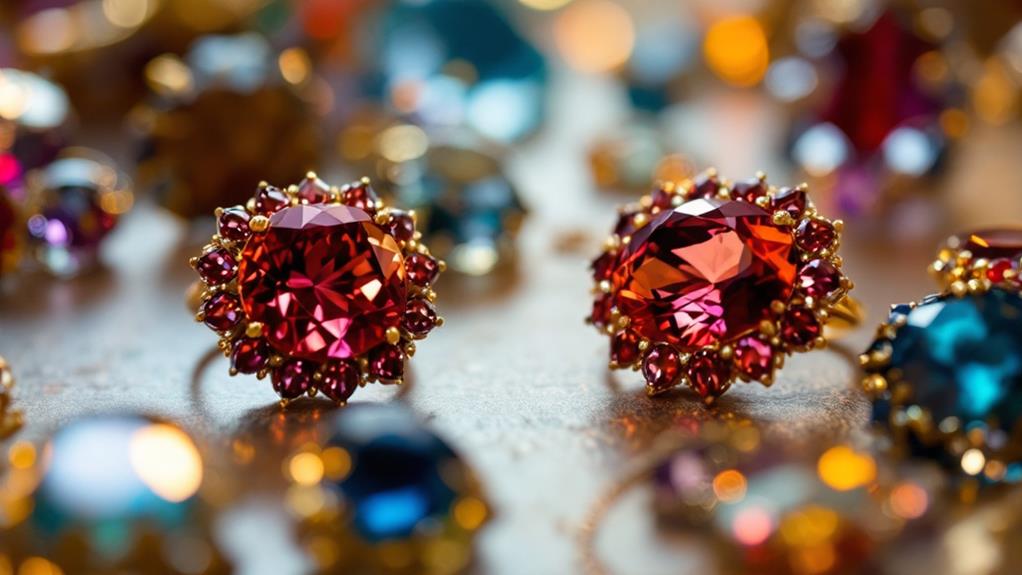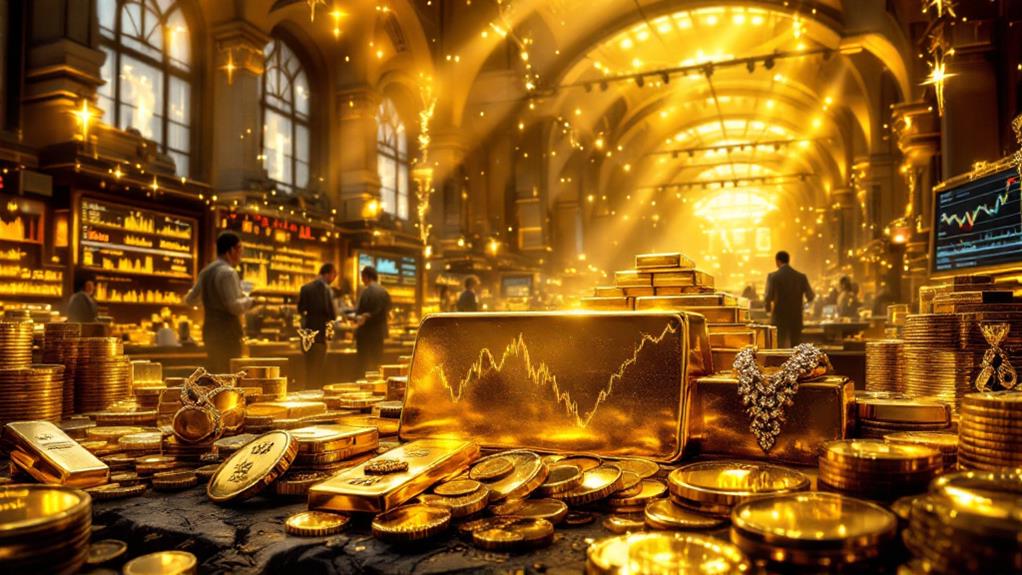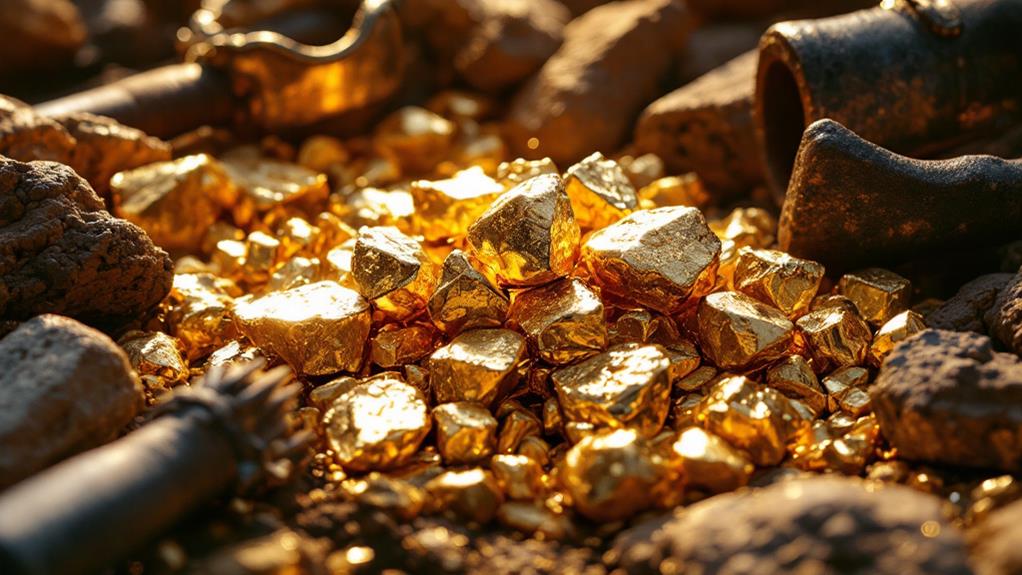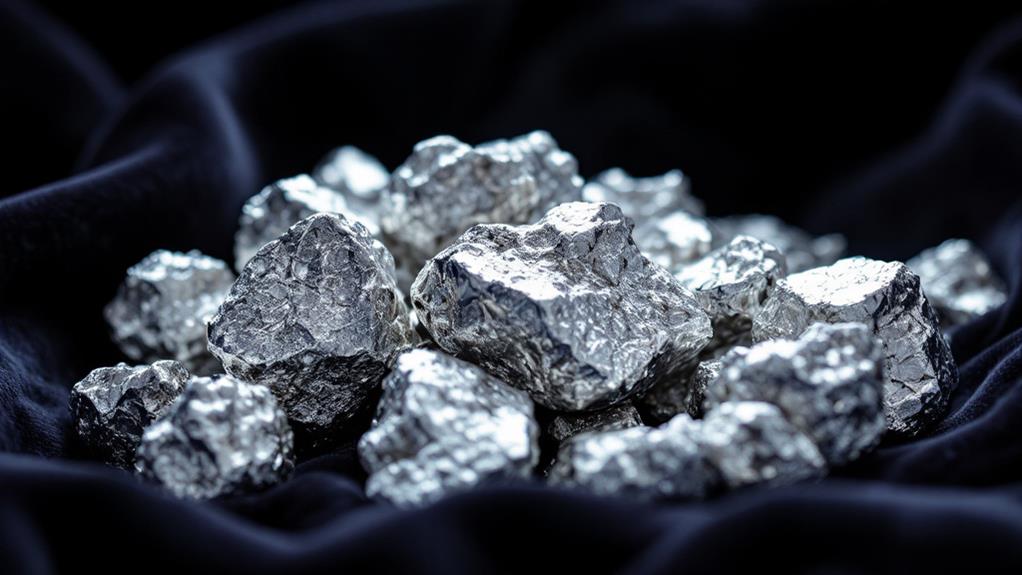Interesting Facts About Diamonds: Sparkle Beyond the Price Tag
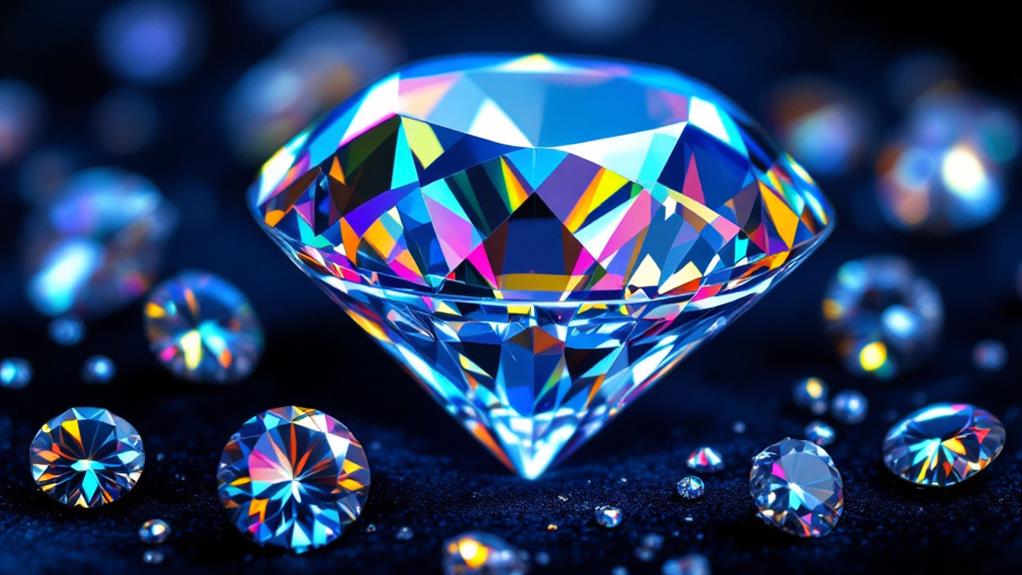
When you think of diamonds, you're probably imagining their incredible sparkle and hefty price tag. But did you know these gems form 100 miles beneath Earth's surface and occasionally hail from meteorites? Their unrivaled hardness and unique light refraction give them an iconic brilliance. Colors vary with the presence of impurities, making blue and red diamonds exceptionally rare and valuable. Throughout history, diamonds have symbolized strength and eternal love, enchanting royals and cultures worldwide. Ethical practices in diamond sourcing are vital today, offering sustainable options. Passionate about learning more? There's much more beneath the surface.
Diamond Formation and Origins
The wonder of diamond formation lies deep beneath the Earth's surface, where extreme heat and pressure work their magic over millions of years to create these extraordinary crystalline structures. You're exploring a process that begins roughly 100 miles below, in an environment so intense that only the hardest material known to humanity can emerge. These diamonds start their expedition as carbon atoms and, through geological processes, transform into the dazzling gems we admire.
Volcanic eruptions play a crucial role in bringing these gems closer to you. They force the diamonds up through the Earth's crust, depositing them into kimberlites, the primary rocks where diamonds are found. Without these eruptions, diamonds might remain hidden indefinitely. The Cullinan diamond, the largest ever uncovered, emerged in South Africa in 1905, illustrating the dramatic passage from formation to revelation.
Diamonds are ancient relics, their origins tracing back to a time long before human civilization. They aren't just terrestrial valuables; some have even been found on meteorites, hinting at cosmic diamond origins. As you consider these gems, remember each one embodies a history of Earth's geological marvels and mysteries.
Unique Physical Properties
Without a doubt, diamonds captivate with their exceptional physical properties. You might already know that diamonds are the hardest natural substance on Earth. This incredible hardness comes from their pure carbon atoms arranged in a tetrahedral structure, allowing diamonds to withstand extreme pressure and heat. This makes them remarkably resilient to scratches and damage, ensuring their gem quality remains pristine over time. Additionally, their unique light refraction properties create the iconic sparkle that makes them so desirable.
Alongside their durability and brilliance, diamonds exhibit fascinating color variations. These variations occur due to impurities present during their formation, often deep underground and brought to the surface by volcanic activity. For example, blue diamonds owe their hue to boron, while yellow diamonds contain nitrogen. Even more intriguing are Chameleon diamonds, which can change color based on light exposure, showcasing a rare and enchanting phenomenon.
Moreover, diamonds have a relatively low density, allowing them to float in dense liquids. This characteristic aids in differentiating authentic diamonds from impostors. All these factors contribute to the allure and mystique of diamonds, making them a symbol of elegance and resilience beyond just their price tag.
Color and Rarity
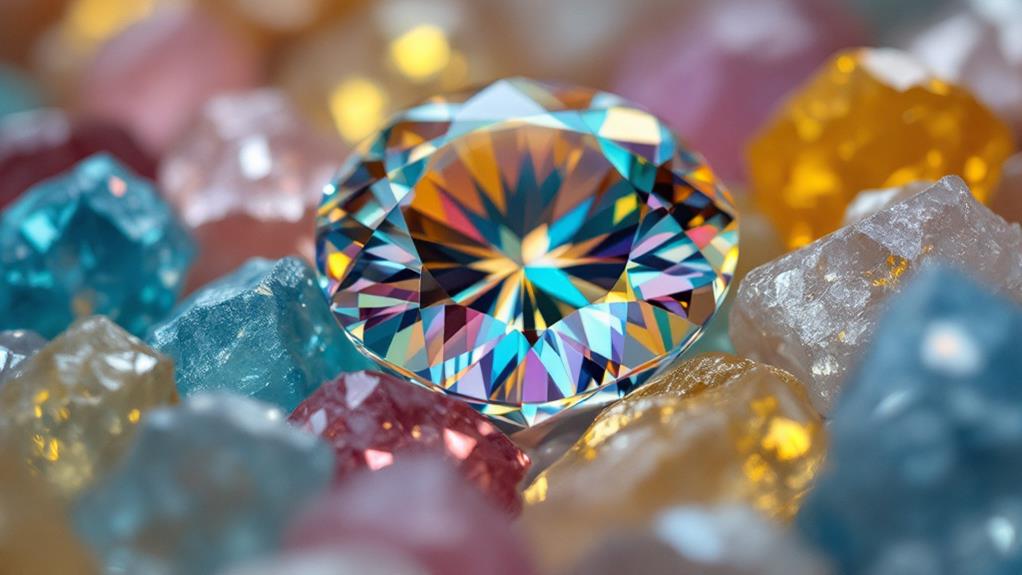
Diamonds come in a stunning array of colors, with each hue telling a unique story of its formation. These fancy-colored diamonds owe their enchanting shades to impurities and anomalies within their crystal lattice. Some of these colors, like blue and red, are especially rare and valuable, adding a layer of exclusivity to their allure. For example, blue diamonds, which contain traces of boron, are among the most sought-after due to their rarity, often fetching millions per carat.
The rarity of these colored gems can dramatically influence their value. Consider these fascinating facts about fancy-colored diamonds:
- Blue Diamonds: Known for their breathtaking hue, they're among the rarest and most expensive, often setting records at auctions.
- Red Diamonds: With fewer than 30 known natural specimens, these are the rarest diamonds, making them a collector's dream.
- Market Rarity: Only about 0.4% of diamonds graded recently are fancy-colored, highlighting their scarcity compared to traditional clear diamonds.
- Saturation and Hue: The value of a colored diamond is considerably affected by its saturation and hue, with more vivid tones commanding higher prices.
Understanding these aspects can elevate your appreciation and knowledge of these natural diamonds.
Historical and Cultural Impact
For over two millennia, diamonds have captivated humanity, tracing their allure back to ancient India around 400 BC. Back then, diamonds were cherished for their size and beauty, gaining a reputation as symbols of strength and eternal love. Their significance soared when Archduke Maximilian gave the initial documented diamond engagement ring to Mary of Burgundy in 1477, establishing a tradition that endures today.
Historically, diamonds have been steeped in mystique and power, often associated with royalty as potent symbols of status and influence. The Hope Diamond, a stunning blue gem weighing 45.52 carats, exemplifies this connection with royalty and notable figures. Its storied past and current valuation of approximately $250 million highlight its enduring historical importance.
Diamonds transcend mere adornment, thriving in diverse cultural variations. Across civilizations, they've played vital roles in ceremonial contexts, from religious rituals to matrimonial exchanges, underscoring their deep-rooted significance. Regardless of symbolizing eternal love in a diamond engagement ring or serving as royal symbols, diamonds have maintained a profound cultural influence. They're not just stones; they're lively links to history and culture, reflecting humanity's fascination with beauty, strength, and timeless allure.
Ethical Sourcing Practices
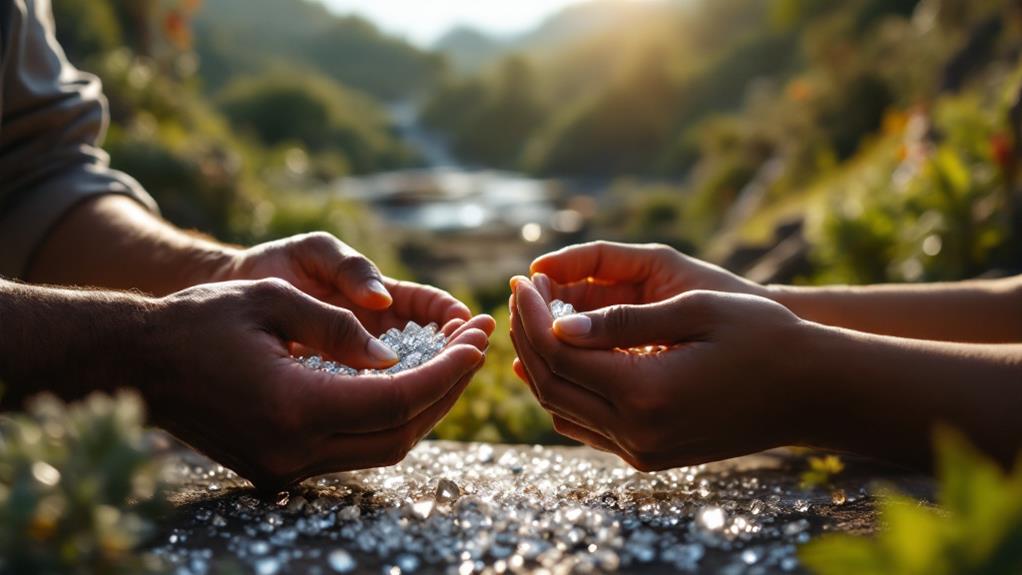
An increasing focus on ethical sourcing practices in the diamond industry guarantees that these precious stones are mined and traded without supporting conflict or human rights abuses, often known as "blood diamonds." The World Diamond Council champions the Kimberley Process Certification Scheme, which mandates that all rough diamonds be verified as conflict-free. This initiative has made a significant impact, but your role as a consumer is vital in pushing for further transparency and responsible consumption.
Consider these four ways you can contribute to a more ethical diamond market:
- Choose Lab-Grown Diamonds: Opt for lab-grown diamonds, which offer an ethical, sustainable alternative without sacrificing quality or beauty. They're also easier on the wallet.
- Support Transparent Initiatives: Look for jewelers that provide clear information about their ethical sourcing practices and adhere to the Kimberley Process Certification Scheme.
- Encourage Sustainable Practices: Favor businesses that prioritize sustainable practices, ensuring a positive impact on communities and the environment.
- Engage with Ethical Buyers and Sellers: Seek out brands that align with your values, focusing on reducing the trade of conflict diamonds.
Famous Diamonds Around the World
Throughout history, some diamonds have captivated the world with their extraordinary size, color, and stories. The Cullinan Diamond, unearthed in 1905, is the largest rough diamond ever found, weighing an astonishing 3,106 carats. After cutting, it produced nine major gemstones, including the Great Star of Africa, now part of the British Crown Jewels. The Hope Diamond, famed for its deep blue hue caused by boron, weighs 45.52 carats and boasts a rich history of royal ownership. Valued at $250 million, it's a reflection of the allure of colored diamonds.
The Koh-i-Noor Diamond, another gem of immense historical significance, originally mined in India, weighs 105 carats and has been a symbol of power and wealth since joining the British Crown Jewels in the 19th century. On the auction front, the Pink Star Diamond, a 59.60-carat marvel, set records by selling for $71.2 million in 2017. Likewise, the Blue Moon Diamond, a rare 12.03-carat blue diamond, fetched $48.4 million in 2015. These gems not only highlight the intriguing tales woven into diamond mining but also underscore the immense value and fascination surrounding these famous stones.
Diamonds in Modern Technology
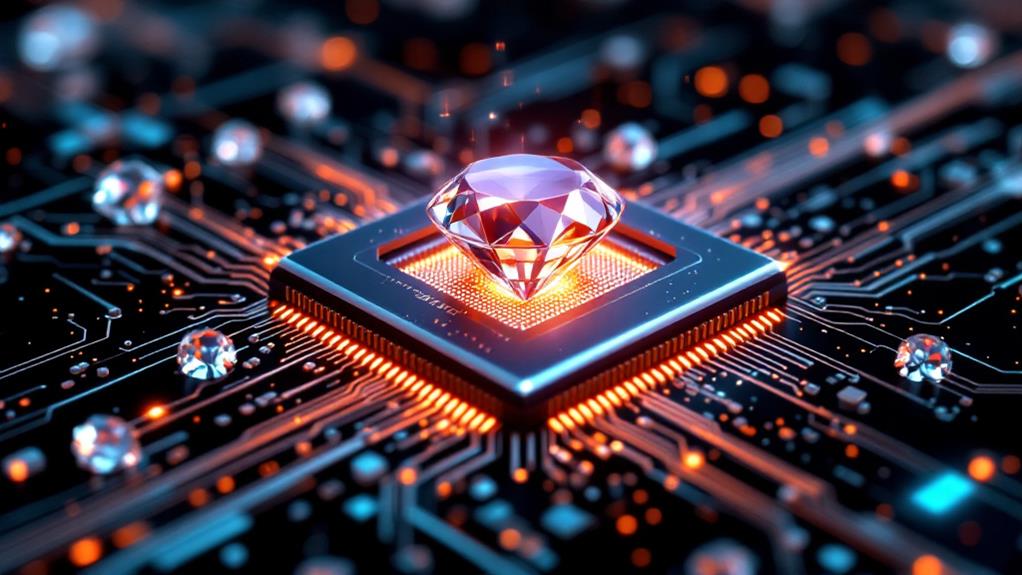
When you think of diamonds, dazzling jewelry might come to mind, but there's more to these gems than meets the eye. Diamonds in modern technology showcase their versatility beyond ornamentation. Thanks to their exceptional hardness and thermal conductivity, diamonds are essential to cutting-edge technology. They're not just pretty; they're practical in industries that require cutting, grinding, and drilling tools.
Synthetic diamonds, produced in labs, are transforming electronics. They're used in high-performance semiconductors and heat sinks, efficiently managing heat and prolonging device longevity. Their applications extend to medical devices too. In surgical equipment and dental tools, diamonds guarantee unmatched precision and durability.
The optical properties of diamonds are making waves in advanced lasers and high-quality optics. These attributes contribute considerably to innovations in imaging and telecommunications. Additionally, researchers are exploring the potential of diamonds in quantum computing. Their unique properties might lead to groundbreaking advancements in data processing and storage.
Here's how diamonds are making a mark in modern tech:
- Synthetic diamonds: Perfect for semiconductors and heat sinks.
- Medical devices: Improve precision in surgical tools.
- Optical properties: Vital for advanced lasers and optics.
- Quantum computing: Potential for future breakthroughs.
Jewelry Trends and Designs
While diamonds play an essential role in technology, their allure in the world of jewelry remains unmatched. You're likely drawn to the sparkling gems for their beauty and timeless appeal. Today, jewelry trends are all about personalization and ethical choices. Personalized jewelry lets you craft unique designs that tell your story, making each piece a true reflection of your style. Vintage diamond pieces are making a comeback, with folks seeking engagement rings and other pieces that carry historical charm and significance.
In recent years, ethical diamond options have gained traction, prompting consumers to prioritize responsible diamond sourcing when choosing their jewelry. Brands that focus on sustainability and ethical practices are more appealing to those who wish to make conscientious purchasing decisions. Stackable rings and layered necklaces offer versatility and creativity, allowing you to mix and match styles and gemstones for a truly customized look.
Social media plays a big role in shaping these trends. Influencers showcase stunning, groundbreaking designs, sparking inspiration and engagement with personalized jewelry. Regardless of whether you're captivated by the nostalgia of vintage designs or the creativity of modern, stackable pieces, there's a world of options to investigate in diamond jewelry today.
Care and Maintenance Tips
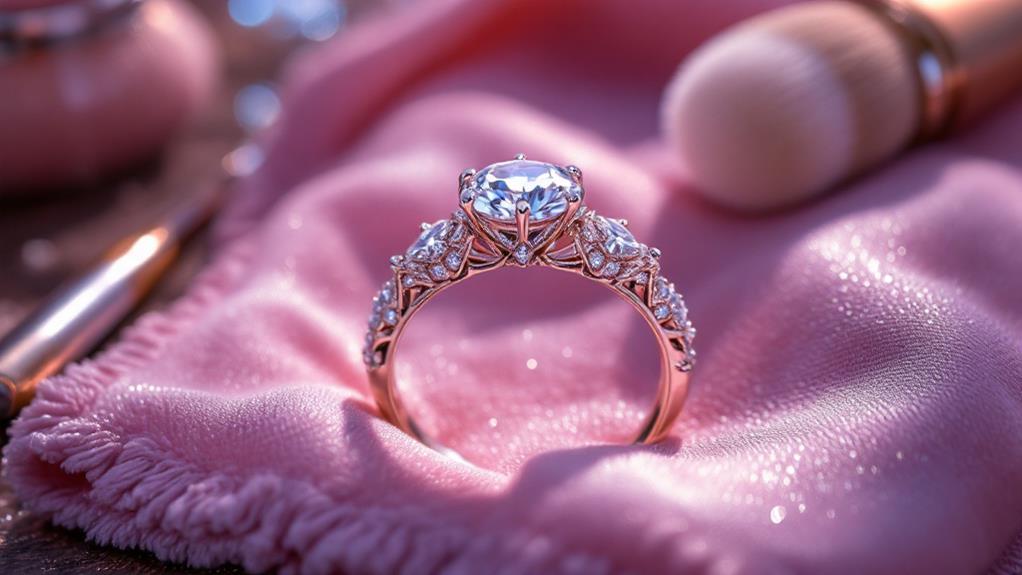
Maintaining the brilliance of your diamond jewelry requires some simple but vital care steps. It's important to develop a diamond care routine that keeps your precious pieces looking their best. Here are some practical tips to help you maintain their sparkle:
- Cleaning Diamonds: Regularly clean your diamonds using a mixture of mild soap and warm water. Gently scrub with a soft toothbrush, especially for intricate designs, to maintain brilliance without damaging the surface.
- Professional Cleaning: Consider professional cleaning services annually, particularly for diamond rings like engagement rings that are worn daily. This helps restore their sparkle and guarantees any hidden dirt is removed.
- Store Diamonds Properly: Prevent scratches by storing diamonds separately in soft pouches or lined jewelry boxes. This avoids contact with other jewelry, reducing the risk of damage.
- Avoid Harsh Chemicals: Keep diamonds away from harsh chemicals such as household cleaners. These substances can dull their shine and potentially affect metal settings.
Additionally, schedule routine inspections with a jeweler to check for loose settings and confirm the diamonds' integrity. This, along with jewelry insurance, helps prevent potential loss or damage, safeguarding your investment.

